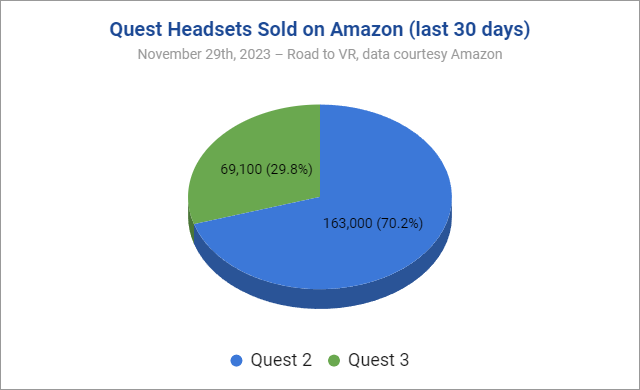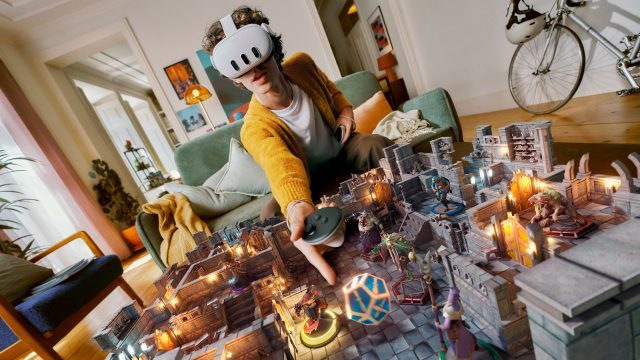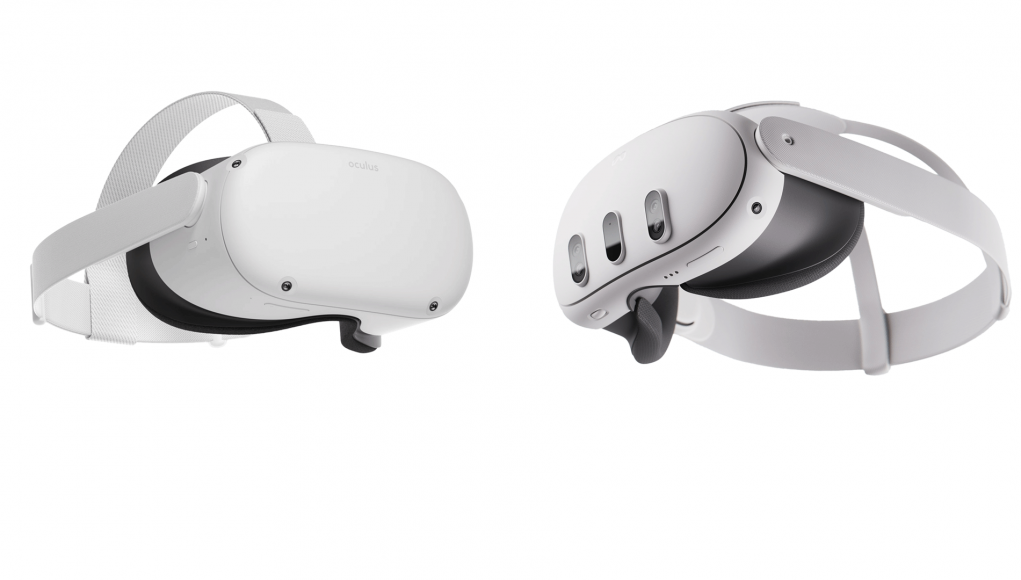With such an alluring price point on Quest 2 during the Black Friday period, it makes sense the headset would sell more than Quest 3. But what will it mean for the company’s effort to make mixed reality the main selling proposition of its headsets?
Twitter user JustDaven pointed out that Amazon reveals some coarse sales figures in certain cases, including for Quest 2 and Quest 3. We thought it would be interesting to look at all of the major Amazon territories where Quests are sold to find out what the numbers look like.
Across all major Amazon territories (just one of many places where the headset is sold), we found that Meta has sold some 240,000 Quest headsets. What’s more interesting than the raw number however is that Quest 2 is outselling Quest 3 nearly 3:1.
 Even though Quest 3 is the hot new model that’s getting all the marketing, it’s not surprising how this happened.
Even though Quest 3 is the hot new model that’s getting all the marketing, it’s not surprising how this happened.
The Quest 2 had a pretty stellar Black Friday discount with a sticker price of $250, including a $50 gift card (pricing it effectively at $200). Compare that to the lowest sticker price for Quest 3 which was $500, including a $15 gift card and a copy of Asgard’s Wrath 2 (pricing it effectively at $425).
Considering the Black Friday sticker prices ($250 vs. $500), people will naturally ask: “At twice the price of Quest 2, is Quest 3 twice as good?”
What It Means
In any case, the cheaper headset appears to be the clear winner so far this holiday season. But what does this mean for Meta—which has been trying to pivot from pure VR to mixed reality with its last two headsets?

Meta has pushed mixed reality as the primary use-case for both the Quest Pro and Quest 3. But while developers still need time to build killer apps and use-cases for mixed reality, a fresh surge of Quest 2 users is about to hit—a headset which just barely supports mixed reality experiences with a grainy black & white view.
This creates a difficult decision for developers: build for the new-fangled headsets with their greater power, better visuals, and much improved mixed reality capabilities? Or cater to the much larger audience of Quest 2 users?
This is of course always the case when game developers need to choose when to shift their focus to a next-gen game console. But this is different.
Between PS4 and PS5, for instance, there is no significant difference between the consoles that compares with the difference in mixed reality capabilities between Quest 2 and Quest 3. For PS4 and PS5, it’s comparatively easy for developers to build a single game and tune it to run well on both systems.
That’s arguably the same case for Quest 2 to Quest 3, but only if we’re talking about pure VR apps.
But a great mixed reality game built for Quest 3 is really going to struggle to provide a good experience on Quest 2; not only because of the lower resolution and black & white passthrough view, but also Quest 2’s lack of depth-sensor—a critical component for creating reasonably accurate maps of the player’s environment to truly mix the virtual and real worlds.
Quest 2 is already three years old. That’s not long for a typical console generation, but it is in the much faster moving landscape of standalone VR headsets.
A new surge of users for the last-gen headset will inevitably slow the transition to the next generation. That means developers will stay focused on the broader Quest 2 audience for a longer period, leaving Quest Pro and Quest 3 with less content that truly takes care of their main differentiator of higher quality mixed reality.

Ever since Quest Pro, Meta has focused its Quest marketing very heavily on mixed reality, giving customers a sense that there’s lots of great mixed reality content for the devices. But that’s far from the truth as things stand today. Mixed reality games and apps are still barely gestating, with most simply attaching a passthrough background to an existing game. Sure, that might make those games better in some cases, but it doesn’t really make use of the headsets’ mixed reality capabilities.
So while Meta would apparently like to see developers accelerate their transition to Quest Pro and Quest 3’s unique capabilities, the market is incentivizing them to decelerate that transition. That puts the platform and its developers at odds, with customers stuck somewhere in the twilight zone between.







